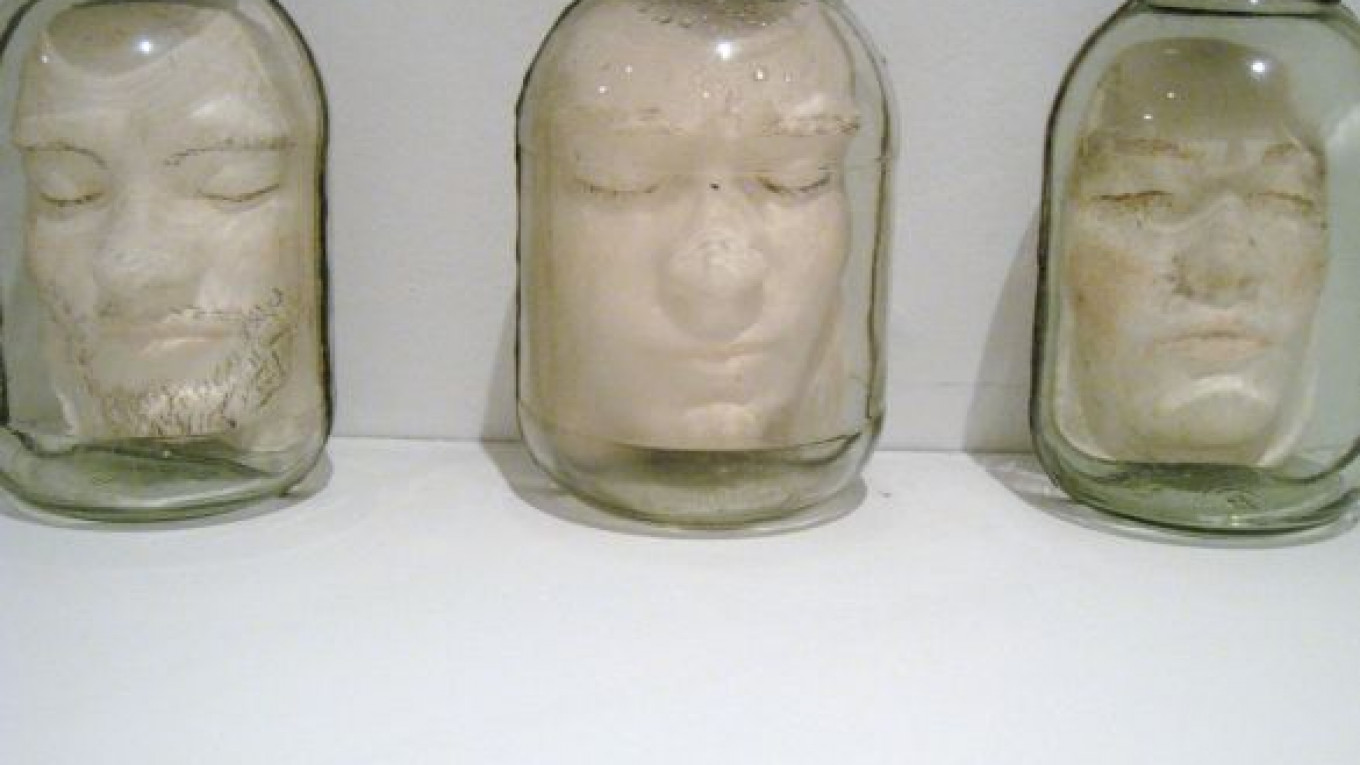The stamp of approval for “true art” is granted to pieces that have passed the test of time. The old masters created works that would outlive their makers and serve as a testament to their talent for decades, even centuries, to come. Artists who were painfully underappreciated throughout their lifetime — the premature expressionist El Greco, the tormented Van Gogh — achieved a posthumous following through the timeless resilience of their skill.
But what do we make of art that was purposefully made to be impermanent — art that mirrors life by, like all organic matter, evolving, withering and eventually reaching its end?
This is the seedling concept behind “Workshop 2011: Today/Tomorrow,” a large-scale contemporary art exhibit unveiled earlier this month by the Free Workshops contemporary art school at the Moscow Museum of Modern Art. Taking up four spacious floors inside MMOMA’s venue on Yermolayevsky Pereulok, “Workshop 2011” features nearly 100 works selected from 500 submissions by young artists who explore, through various media, the theme of time and its relativity.
For anyone who has long since relegated the contemporary art experience to the stupor of staring at squares on a wall, this exhibit could provide a restorative treat. Tackling the notion of time with both a youthful sense of humor and a melancholy beyond the artists’ years, the exhibit uses video installations, free-standing constructions and interactive pieces to attempt to rearticulate our perception of the past, present and future.
According to curator Darya Kamyshnikova, the display’s refreshingly accessible works are geared toward the “profane viewer” — an actual art term, she reassures — referring to someone who has had no prior initiation into the secrets of modern aesthetics.
“These are the people we love the most, the unprepared visitor, who maybe ran into the museum to get out of the rain,” Kamyshnikova explained. “He brings his immediate thoughts and emotions into the installation, so the piece is always new and different depending on who’s completing it.”
There is “Memory,” a shelf lined with faces asleep in glass jars, and “Sources of Dream,” an installation of four suspended pillows connected by cords to a trippy projection screen; old-fashioned family portraits whose features suddenly begin to slide down their chins; a Viennese chair that had already begun melting at the opening of the exhibit but that, a day later, was merely a shriveled corpse lying beneath a wall projection of its former shape.
Monitors at the exhibit encourage visitors to come into contact with the interactive installations and play a role in their development. At their behest, one can flip through the mutilated political texts in “Lenin’s (R)Evolution” or feed randomly piled photographs into a specially prepared shredder.
“Bye-bye, ex-boyfriend,” said one visitor as she deposited a photograph of an unknown, flower-holding man into the machine.
A special project titled “Who’s Not Here” occupies the top floor. It was curated by young art historian Yekaterina Kuzmina, whose aim was to create an aesthetic vacuum devoid of humans, where everyday objects are liberated from their socio-cultural functions and merely exist in the here and now.
Upon entering, the viewer is sucked into this parallel art space with “Long Drink,” a nightmarish concoction of black straws that creeps up the wall and across the ceiling before peeking into the adjacent room. This piece “is like a parasite that unites the entire exhibit,” Kuzmina explained.
One of the workshop’s most curious works, “Open Spaces,” mimics a utopian world with beds of live grass, tiny plastic figures frolicking among paper houses, and suspended wads of illuminated cellophane made to resemble clouds. When asked how the curators intend to sustain the freshness of the grass, Kuzmina replied that its deterioration is the entire point; the artist wants the composition to wither because that will gradually change its essence.
“You get a feeling from classic art that the desire to enter history, to become monumental, lead to the use of durable materials,” Kuzmina said. “But here, the volatility of the artwork makes it more meaningful.”
As she was saying this, two old women monitoring the exhibit whispered to each other that someone should really water the plants.
“You can’t just keep this thing untended — and look, it’s attracting bugs!” one of them said, shaking her head at the tiny flies becoming entrapped in the clouds of cellophane. “There goes another one, the pest.”
“Workshop 2011: Today/Tomorrow” runs until Sept. 4. Moscow Museum of Modern Art, 17 Yermolayevsky Pereulok. Metro Mayakovskaya. Tel. 231-3660, .
A Message from The Moscow Times:
Dear readers,
We are facing unprecedented challenges. Russia's Prosecutor General's Office has designated The Moscow Times as an "undesirable" organization, criminalizing our work and putting our staff at risk of prosecution. This follows our earlier unjust labeling as a "foreign agent."
These actions are direct attempts to silence independent journalism in Russia. The authorities claim our work "discredits the decisions of the Russian leadership." We see things differently: we strive to provide accurate, unbiased reporting on Russia.
We, the journalists of The Moscow Times, refuse to be silenced. But to continue our work, we need your help.
Your support, no matter how small, makes a world of difference. If you can, please support us monthly starting from just $2. It's quick to set up, and every contribution makes a significant impact.
By supporting The Moscow Times, you're defending open, independent journalism in the face of repression. Thank you for standing with us.
Remind me later.






